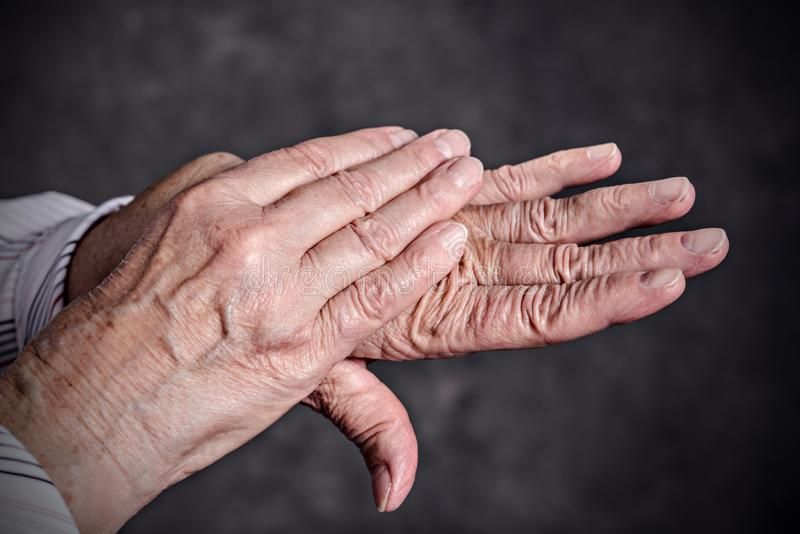
What is arthritis?
Arthritis means inflammation of the joints. It causes pain and usually also limits movement of the joints that are affected. There are many kinds of arthritis. A type called osteoarthritis (also called degenerative joint disease) is the most common.
What causes osteoarthritis?
The exact cause isn’t known. A person may be at increased risk of osteoarthritis because it runs in the family. Osteoarthritis seems to be related to the wear and tear put on joints over the years in most people. But wear and tear alone do not cause osteoarthritis. Previous trauma (e.g fractures) can increase the risk of arthritis in that joint as can lifestyle factors and obesity
What happens when a joint is affected?
Normally, a smooth layer of cartilage acts as a pad between the bones of a joint. Cartilage helps the joint move easily and comfortably. In some people, the cartilage thins as the joints are used. This is the start of osteoarthritis. Over time, the cartilage wears away and the bones may rub against one another.
Bones may even start to grow too thick on the ends where they meet to make a joint, and bits of cartilage and bone may loosen and get in the way of movement. This can cause pain, joint swelling and stiffness.
Who gets osteoarthritis?
Osteoarthritis is more common in older people because they have been using their joints longer. Using the joints to do the same task over and over or simply using them over time can make osteoarthritis worse.
Younger people can also get osteoarthritis. Athletes are at risk because they use their joints so much. People who have jobs that require the same movement over and over are also at risk. Injuries to a joint can increase the risk of arthritis in the joint later on. Excess weight also can accelerate arthritis in the knees, hips and spine.
Is there a treatment?
No cure for osteoarthritis has been found. But the right plan can help you stay active, protect your joints from damage, limit injury and control pain. A Thorpes Physiotherapist can help you create the right plan for you.
- Tips on staying active
- Lose weight if you’re overweight.
- Exercise regularly for short periods.
- Use canes and other special devices to protect your joints.
- Avoid lifting heavy things.
- Avoid overusing your joints.
- Don’t pull on objects to move them–push them instead.
- Take your medicine the way your doctor suggests.
- Use heat and/or cold to reduce pain or stiffness.
- Recommend supplements that can help if your arthritis isn’t too severe
- Recommend that you see a Nutritional Therapist
- Refer you on for injection therapy is required (either visco-supplementation or steroid injections
- Will my arthritis get worse?
Osteoarthritis does tend to get worse over time. But you can do many things to help yourself.
It’s important to stay as active as possible. When joints hurt, people tend not to use them and the muscles get weak. This can cause contractures (stiff muscles), and it can make it harder to get around. This causes more pain and the cycle begins again. Your Physiotherapist may suggest you consult your doctor to discuss pain control with you so that you can stay active and avoid this problem.
Will medicine help?
Medicines you can buy without a prescription that reduce inflammation, such as aspirin, ibuprofen or naproxen, or pain relievers, such as acetaminophen can help you feel better. Your doctor can also prescribe medicine for you, such as prescription pain relievers or nonsteroidal anti-inflammatory drugs (NSAIDs) used to treat certain types of arthritis. NSAIDs can help by reducing inflammation, swelling and pain in the joints, but not everyone can take them.
Medicine should be used wisely. You only need the amount that makes you feel good enough to keep moving. Using too much medicine may increase the risk of side effects.
Can special devices really help?
Yes. Special devices and different ways of doing things can help people with arthritis stay independent for as long as possible. These devices help protect your joints and keep you moving. For example, if you learn to use a cane the right way, you can help reduce the amount of pressure your weight puts on your hip joint when you walk by up to 60%.
- Special devices for people with arthritis
- Canes, walkers and splints
- Shoe inserts, wedges or pads
- Special fasteners (such as Velcro) on clothing
- Large grips for tools and utensils (wrap foam or fabric around items with narrow handles, like pens)
- Wall-mounted jar openers
- Electric appliances, such as can openers and knives
- Mobile shower heads
- Bath seats and grab bars for the bathtub
Will special exercises really help?
Yes, evidence strongly supports the role of exercise in all stages of arthritis. Exercise keeps your muscles strong and helps you stay flexible. Exercises that don’t strain your joints are best. To avoid pain and injury, choose exercises that can be done in small amounts with rest time in between. Dancing, weight lifting and bike riding are good exercises for people with arthritis.
Hydrotherapy (exercise in water) can be very helpful for hip, knee and spinal arthritis. Thorpes Physiotherapy offer these classes at our Yateley clinic
Try tightening your muscles and then relaxing them a number of times. You can do this with all of your major muscle groups. You could also try some exercise in water (hydrotherapy) and your Thorpes Physiotherapist can advise you on the best exercises.
Talk to your Physiotherapist about starting a new exercise program.
Should I use heat to ease pain?
Using heat may reduce your pain and stiffness. Heat can be applied through warm baths, hot towels, hot water bottles or heating pads. Try alternating heat with ice packs.
Warm regards

Jonathan
Director of Thorpes Physiotherapy
